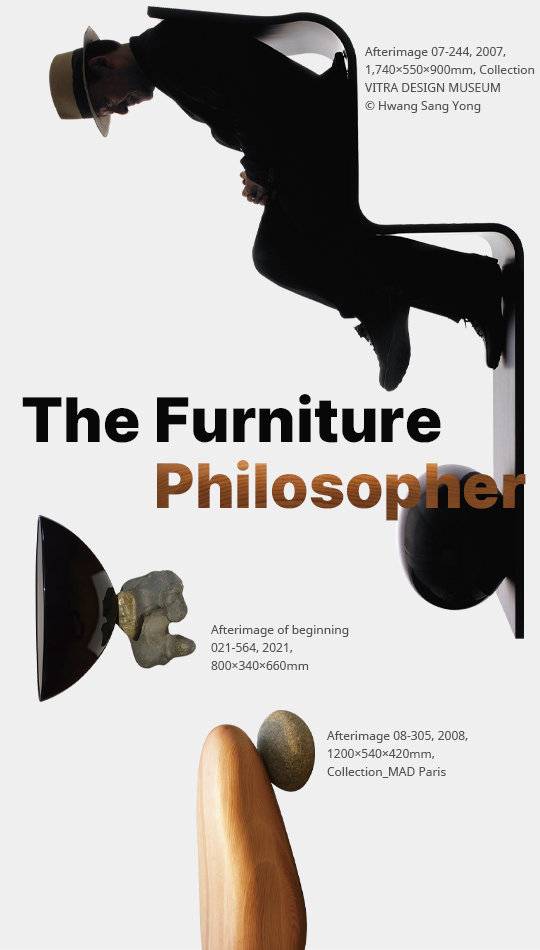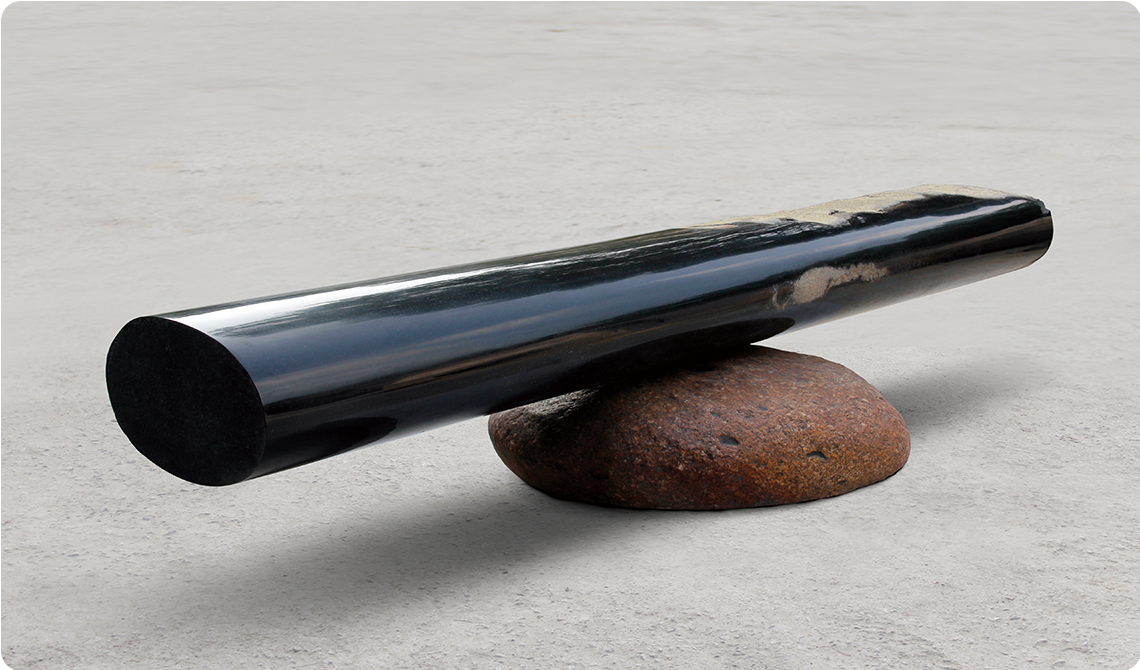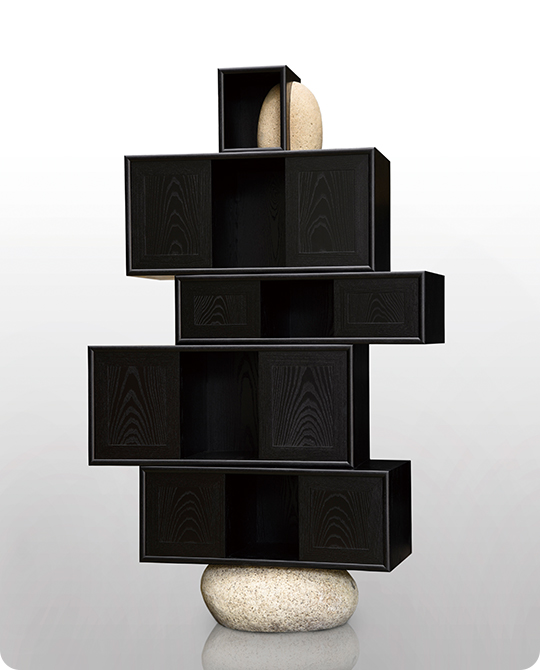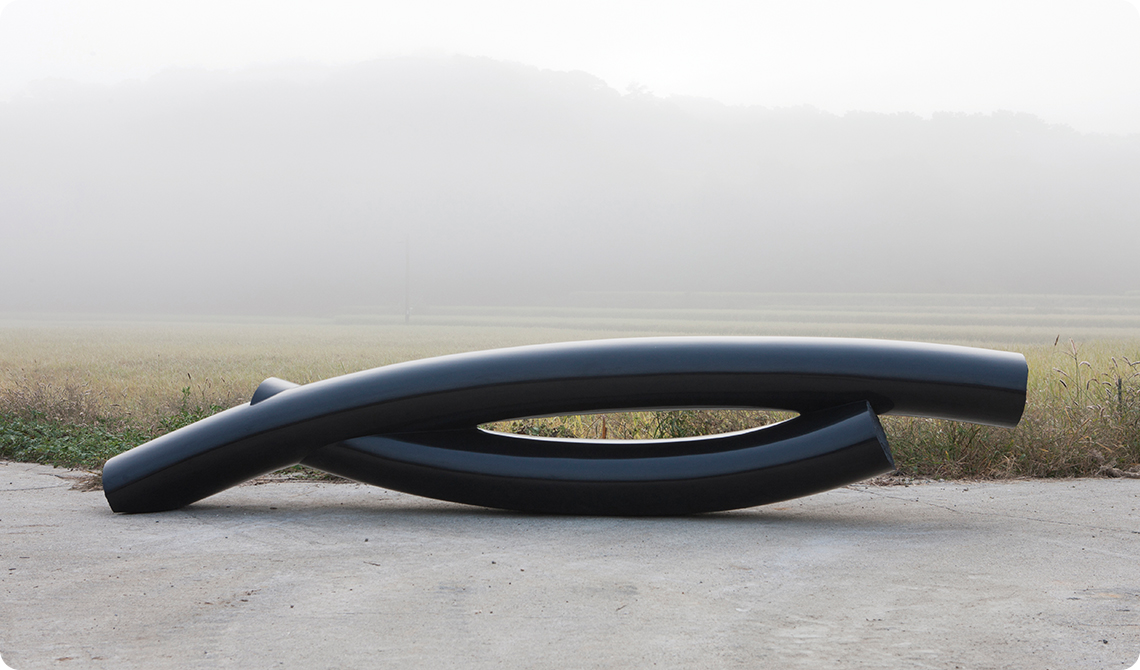One man’s furniture can guide you into a forest of tranquility. His pieces are made of elegant curves, stone with a wet sheen, and the gentle texture of wood. When you take time to gaze upon his pieces, they seem to unfold before your eyes like a landscape painting. They’re just pieces of furniture, but the mere sight has a calming effect upon the mind. I’m speaking of the work of Choi Byung Hoon, a leading figure in Korean art furniture. Choi’s work is the product of his pioneering spirit and his drive to create something unique by breaking new ground in Korean aesthetics, with its pursuit of harmony with nature, as well as in areas hitherto unexplored in this country.


Writer.
Sung Ji Yeon
Photos courtesy of.
Choi Byung Hoon
Choi Byung Hoon
Q. What exactly is art furniture?
Furniture is an essential part of our lives. But compared to the amount of space it takes up, it’s actually only used for a short amount of time. If furniture could serve as an outstanding work of art when it’s not serving a more mundane function, wouldn’t that enrich our lives?The concept of art furniture originated from such musings. It’s the pursuit of furniture that can serve as an objet d’art, that can impart personality to a space.
Q. You’re a pioneer of art furniture in Korea.
I created a course called “art furniture” while working as a professor at Hongik University in 1990. I began using the term publicly during a solo exhibition in 1993. There was no concept of art furniture in Korea back then.
Q. You’ve released more than 700 pieces. What are your most characteristic pieces?
An artist’s work must change. To maintain vitality as an artist, you’ve got to find new values at the right time. In that sense, I have a few pieces that illustrate major changes that were taking place in my work.
The first is “Afterimage from the Beginning of the World,” which premiered at Galerie Downtown in Paris in 1996. This piece took the shape of an unadorned egg. French furniture, unlike Korean furniture, tends to have a lot of ornamentation. But my piece looked like a mass of simple lines. The response was positive, perhaps because it was quite distinct from French furniture. That was my breakout piece in my career overseas.
Another significant piece is “Afterimage 07-244,” which I released in 2004. I shaped the wood with steam bending and placed a stone on the front. The stone enables the piece to function as a chair despite its lack of legs. I also call it the “meditation chair” because the stone draws the eyes of the person sitting there, serving as a meditation aid.
The last piece I should mention here is “Scholar’s Way,” which I unveiled in 2019. The Museum of Fine Arts, Houston, had commissioned me to do a piece for its new building. I started by sketching the piece in sumi ink and then worked the sculpture in stone. I drew inspi-ration for this piece from suseok, the curiously shaped stones that were an important part of Korea’s scholarly culture in an earlier era.
Q. Is there any particular reason you work with wood and stone?
The materials of wood and stone fit perfectly with the Korean temperament. Traditionally, Koreans have adapted their lifestyle to their natural surroundings. That can be seen in how Korean temples are built, for instance: rath-er than trying to dominate nature, the temple seems to hide in the folds of the hills. On a more personal level, I often played with sticks and stones in my childhood in Gangwon-do Province. Since they were familiar materials, it was natural to take them up in my work.
And stone in particular has been a wonderful material for me. My work was initially based on wood, but I would occasionally run into structural issues that couldn’t be resolved with wood alone. But stone was a good fix, which is another reason I came to use it. You can see an example of that in “Afterimage 07-244.”
 Afterimage of beginning 017-486,
Afterimage of beginning 017-486, 2017, 3,000×950×560mm
 Afterimage of beginning 021-578,
Afterimage of beginning 021-578, 2021, 1,080×450×1,750mm, Collection_Leeum, Samsung Museum of Art
Q. Has Korean culture influenced the formation of your style?
Yes, it has. Gallery staff and collectors who see my furniture even remark that they seem to be looking at a traditional Asian painting. I craft my furniture according to the spirit inside me, the spirit of a Korean. That’s based on the self-reflection of Zen thought, which is derived from Buddhism. At the same time, it’s grounded in the Neo-Confucian identifying the essence of being human and striving for perfection in virtue.
Ultimately, the mindset I seek to reflect in my furniture is that of looking inside and disciplining and emptying myself. That’s the mindset our ancestors pursued for so long. Based on that mindset, I seek to make furniture that’s not adorned, but that has negative space and room to breathe.
Q. How would you sum up the philosophy behind your work?
My pieces of furniture are meditative objets d’art born of self-reflection that seek out the silence of internal depth rather than the scream of a flashy exterior.
Q. What are three things you have to pay special attention to during your work?
Since we’re talking about furniture, function is the basic consideration. Aside from that, my identity as an artist is most important. My unique artistic viewpoint definitely needs to shine through my furniture. Without that, it might as well be factory-made.
Second, you have artistry. My artistic identity needs be expressed at a high level of craftsmanship.
The final consideration is relevance for the times. A piece needs to encapsulate its era. The reason that Goryeo celadon and Joseon white porcelain are held in such high esteem is because they each capture their respective zeitgeist. To achieve that, I have to keep up with various fields and not be remiss in my studies.
Q. What’s the source of the energy that has kept you working for so long?
When I was in my mid-to-late 20s at the time, and I had a lot of chances to travel for work. While overseas, I encountered the Maya and Inca civilizations and African art. That all came as a great shock to me because I knew so little about the outside world at the time. I had an epiphany: people and cultures are all different, and there’s no such thing as superior or inferior when it comes to culture.
I learned that difference itself is meaningful, which motivated me to maximize the qualities that I have but other artists do not. There was one incident I remember to this day. When I was holding my first exhibition in Paris, I passed by another gallery on the way to the one that was hosting my solo exhibition. After browsing through other people’s artwork, I turned to my own furniture and realized how different it was. That was when I understood my competitive edge. Experiences of that sort enabled me to trust myself and my ability to build my own artistic world, and that’s kept me going until today.
Q. I’m curious about your future plans.
I did two big projects last year, and the pieces are now complete. One is being installed in the Middle East, and the other in Korea. They’ll be unveiled in February or March.
 Afterimage of beginning 013-400, 2013, 3,090×510×590mm © Ji, Ho Jun
Afterimage of beginning 013-400, 2013, 3,090×510×590mm © Ji, Ho Jun